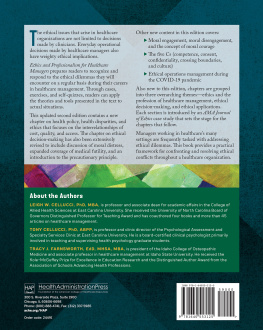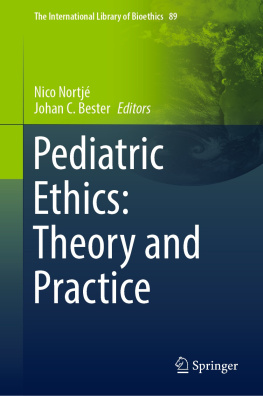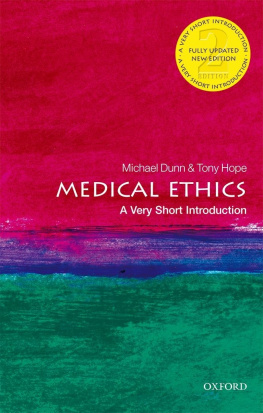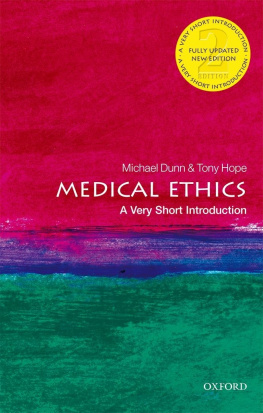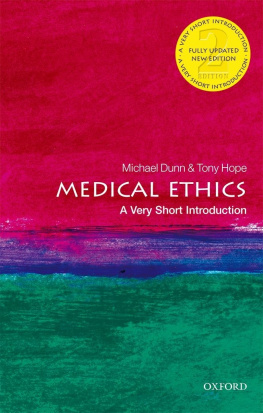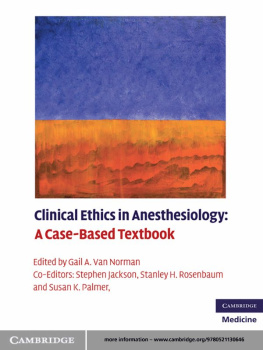
Notice
Medicine is an ever-changing science. As new research and clinical experience broaden our knowledge, changes in treatment and drug therapy are required. The authors and the publisher of this work have checked with sources believed to be reliable in their efforts to provide information that is complete and generally in accord with the standards accepted at the time of publication. However, in view of the possibility of human error or changes in medical sciences, neither the authors nor the publisher nor any other party who has been involved in the preparation or publication of this work warrants that the information contained herein is in every respect accurate or complete, and they disclaim all responsibility for any errors or omissions or for the results obtained from use of the information contained in this work. Readers are encouraged to confirm the information contained herein with other sources. For example and in particular, readers are advised to check the product information sheet included in the package of each drug they plan to administer to be certain that the information contained in this work is accurate and that changes have not been made in the recommended dose or in the contraindications for administration. This recommendation is of particular importance in connection with new or infrequently used drugs.

Copyright 2015 by McGraw-Hill Education. All rights reserved. Except as permitted under the United States Copyright Act of 1976, no part of this publication may be reproduced or distributed in any form or by any means, or stored in a data base or retrieval system, without the prior written permission of the publisher.
ISBN: 978-0-07-184507-6
MHID: 0-07-184507-0
The material in this eBook also appears in the print version of this title: ISBN: 978-0-07-184506-9, MHID: 0-07-184506-2.
eBook conversion by codeMantra
Version 1.0
All trademarks are trademarks of their respective owners. Rather than put a trademark symbol after every occurrence of a trademarked name, we use names in an editorial fashion only, and to the benefit of the trademark owner, with no intention of infringement of the trademark. Where such designations appear in this book, they have been printed with initial caps.
McGraw-Hill Education eBooks are available at special quantity discounts to use as premiums and sales promotions or for use in corporate training programs. To contact a representative, please visit the Contact Us page at www.mhprofessional.com.
TERMS OF USE
This is a copyrighted work and McGraw-Hill Education and its licensors reserve all rights in and to the work. Use of this work is subject to these terms. Except as permitted under the Copyright Act of 1976 and the right to store and retrieve one copy of the work, you may not decompile, disassemble, reverse engineer, reproduce, modify, create derivative works based upon, transmit, distribute, disseminate, sell, publish or sublicense the work or any part of it without McGraw-Hill Educations prior consent. You may use the work for your own noncommercial and personal use; any other use of the work is strictly prohibited. Your right to use the work may be terminated if you fail to comply with these terms.
THE WORK IS PROVIDED AS IS. MCGRAW-HILL EDUCATION AND ITS LICENSORS MAKE NO GUARANTEES OR WARRANTIES AS TO THE ACCURACY, ADEQUACY OR COMPLETENESS OF OR RESULTS TO BE OBTAINED FROM USING THE WORK, INCLUDING ANY INFORMATION THAT CAN BE ACCESSED THROUGH THE WORK VIA HYPERLINK OR OTHERWISE, AND EXPRESSLY DISCLAIM ANY WARRANTY, EXPRESS OR IMPLIED, INCLUDING BUT NOT LIMITED TO IMPLIED WARRANTIES OF MERCHANTABILITY OR FITNESS FOR A PARTICULAR PURPOSE. McGraw-Hill Education and its licensors do not warrant or guarantee that the functions contained in the work will meet your requirements or that its operation will be uninterrupted or error free. Neither McGraw-Hill Education nor its licensors shall be liable to you or anyone else for any inaccuracy, error or omission, regardless of cause, in the work or for any damages resulting therefrom. McGraw-Hill Education has no responsibility for the content of any information accessed through the work. Under no circumstances shall McGraw-Hill Education and/or its licensors be liable for any indirect, incidental, special, punitive, consequential or similar damages that result from the use of or inability to use the work, even if any of them has been advised of the possibility of such damages. This limitation of liability shall apply to any claim or cause whatsoever whether such claim or cause arises in contract, tort or otherwise.
Contents
Introduction
T his book is about the ethical issues that clinicians encounter as they care for patients. In order to practice excellent clinical care in modern medicine, clinicians must understand ethical issues such as informed consent, decisional capacity, surrogate decision making, truth telling, confidentiality, privacy, the distinction between research and clinical care, and end-of-life care. Clinicians must apply this knowledge each day in their practices. By clinicians we mean not only physicians but also nurses, social workers, psychologists, clinical ethicists, medical technicians, chaplains, and others responsible for the welfare of patients. We include, as well, students who are preparing to enter these professions. It is our hope that this book will be particularly helpful to those who serve on hospital ethics committees as they deliberate about appropriate action in difficult ethical cases.
Ethical issues are embedded in every clinical encounter between patients and clinicians. The technical and moral aspects of patient care are inseparable. The central feature of the clinical encounter is the therapeutic relationship between clinicians and patientsa relationship that is permeated with ethical responsibilities. Physicians enter the doctor-patient relationship with a professional identity that obliges them to give priority to the patients interests, to devote themselves to the competent care of the patient, to preserve confidentiality, and to communicate honestly and compassionately. Physicians must aim, in the words of Hippocrates, to help and do no harm, an admonition that is not as simple as it seems within the complexities of contemporary medical science and practice.
In the usual course of a therapeutic relationship, clinical care and ethical imperatives run smoothly together. The reason for this is that generally the patient and clinician share the same goal, namely, to resolve the medical problems and needs of the patient. For example, a patient presents with a distressing cough and wheezing and wants relief; a physician responds to the patient and utilizes the correct means to diagnose and treat. In this situation, the treatment for, say, a mild asthma attack, is effective and the patient is satisfied. In other cases, this simple scene becomes complicated. The patients wheezing may be caused by a tumor obstructing the airway. This disease may be life threatening; the treatment may be complex and may prove unsuccessful. On other occasions, the smooth course of the doctor-patient relationship may be interrupted by what we call an ethical question: a doubt about the right action when ethical responsibilities conflict or when their meaning is uncertain or confused. For example, the physicians duty to cure is countered by a patients refusal of indicated treatment, or the patients need for treatment cannot be met because of inability to pay. The principles that usually bring the clinician and the patient into a therapeutic relationship seem to collide. This collision blocks the process of deciding and acting required for clinical care. Sometimes, confusion and conflict can become extreme and distressing for all parties. This book aims to elucidate the ethical dimensions of clinical care when doubt about right action blocks decisions. In such cases, we attempt to formulate recommendations about how that doubt might be resolved.


